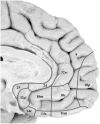Bipolar and major depressive disorder: neuroimaging the developmental-degenerative divide - PubMed (original) (raw)
Review
Bipolar and major depressive disorder: neuroimaging the developmental-degenerative divide
Jonathan Savitz et al. Neurosci Biobehav Rev. 2009 May.
Abstract
Both major depressive disorder and bipolar disorder are the subject of a voluminous imaging and genetics literature. Here, we attempt a comprehensive review of MRI and metabolic PET studies conducted to date on these two disorders, and interpret our findings from the perspective of developmental and degenerative models of illness. Elevated activity and volume loss of the hippocampus, orbital and ventral prefrontal cortex are recurrent themes in the literature. In contrast, dorsal aspects of the PFC tend to display hypometabolism. Ventriculomegaly and white matter hyperintensities are intimately associated with depression in elderly populations and likely have a vascular origin. Important confounding influences are medication, phenotypic and genetic heterogeneity, and technological limitations. We suggest that environmental stress and genetic risk variants interact with each other in a complex manner to alter neural circuitry and precipitate illness. Imaging genetic approaches hold out promise for advancing our understanding of affective illness.
Figures
Figure 1. Amygdala-Centric Model of Potential Pathophysiological Changes in BD and MDD
Lesions (red crosses) to the ventromedial, orbital PFC or basal ganglia may abrogate top-down control over the amygdala and deeper limbic structures (gray and purple lines). A similar PFC-limbic disconnection effect may result from white matter pathology (pink crosses). Alternatively, functional hypersensitivity of deeper limbic structures and/or the amygdala may disrupt prefrontal emotional regulation (black lines).
Figure 2. Architectonic subdivisions of the medial surface of the human brain
Ongur et al. (2003). J Comp Neurol. 460; 425–449
Similar articles
- The structural neuroimaging of bipolar disorder.
Emsell L, McDonald C. Emsell L, et al. Int Rev Psychiatry. 2009;21(4):297-313. doi: 10.1080/09540260902962081. Int Rev Psychiatry. 2009. PMID: 20374145 Review. - Structural and functional neuroimaging studies in major depressive disorder with psychotic features: a critical review.
Busatto GF. Busatto GF. Schizophr Bull. 2013 Jul;39(4):776-86. doi: 10.1093/schbul/sbt054. Epub 2013 Apr 24. Schizophr Bull. 2013. PMID: 23615813 Free PMC article. Review. - Gray and white matter differences in adolescents and young adults with prior suicide attempts across bipolar and major depressive disorders.
Fan S, Lippard ETC, Sankar A, Wallace A, Johnston JAY, Wang F, Pittman B, Spencer L, Oquendo MA, Blumberg HP. Fan S, et al. J Affect Disord. 2019 Feb 15;245:1089-1097. doi: 10.1016/j.jad.2018.11.095. Epub 2018 Nov 22. J Affect Disord. 2019. PMID: 30699851 Free PMC article. - A Homer 1 gene variant influences brain structure and function, lithium effects on white matter, and antidepressant response in bipolar disorder: A multimodal genetic imaging study.
Benedetti F, Poletti S, Locatelli C, Mazza E, Lorenzi C, Vitali A, Riberto M, Brioschi S, Vai B, Bollettini I, Melloni E, Aggio V, Falini A, De Bartolomeis A, Colombo C. Benedetti F, et al. Prog Neuropsychopharmacol Biol Psychiatry. 2018 Feb 2;81:88-95. doi: 10.1016/j.pnpbp.2017.10.011. Epub 2017 Oct 27. Prog Neuropsychopharmacol Biol Psychiatry. 2018. PMID: 29079138 - Structural neuroimaging studies in major depressive disorder. Meta-analysis and comparison with bipolar disorder.
Kempton MJ, Salvador Z, Munafò MR, Geddes JR, Simmons A, Frangou S, Williams SC. Kempton MJ, et al. Arch Gen Psychiatry. 2011 Jul;68(7):675-90. doi: 10.1001/archgenpsychiatry.2011.60. Arch Gen Psychiatry. 2011. PMID: 21727252
Cited by
- Altered regional homogeneity in pediatric bipolar disorder during manic state: a resting-state fMRI study.
Xiao Q, Zhong Y, Lu D, Gao W, Jiao Q, Lu G, Su L. Xiao Q, et al. PLoS One. 2013;8(3):e57978. doi: 10.1371/journal.pone.0057978. Epub 2013 Mar 6. PLoS One. 2013. PMID: 23526961 Free PMC article. - Different spatial patterns of brain atrophy and global functional connectivity impairments in major depressive disorder.
Zhuo C, Zhu J, Wang C, Qu H, Ma X, Qin W. Zhuo C, et al. Brain Imaging Behav. 2017 Dec;11(6):1678-1689. doi: 10.1007/s11682-016-9645-z. Brain Imaging Behav. 2017. PMID: 27766588 Free PMC article. - Individual differences in amygdala-medial prefrontal anatomy link negative affect, impaired social functioning, and polygenic depression risk.
Holmes AJ, Lee PH, Hollinshead MO, Bakst L, Roffman JL, Smoller JW, Buckner RL. Holmes AJ, et al. J Neurosci. 2012 Dec 12;32(50):18087-100. doi: 10.1523/JNEUROSCI.2531-12.2012. J Neurosci. 2012. PMID: 23238724 Free PMC article. - Effects of arterial cannulation stress on regional cerebral blood flow in major depressive disorder.
Savitz J, Nugent AC, Cannon DM, Carlson PJ, Davis R, Neumeister A, Rallis-Frutos D, Fromm S, Herscovitch P, Drevets WC. Savitz J, et al. Sci Rep. 2012;2:308. doi: 10.1038/srep00308. Epub 2012 Mar 8. Sci Rep. 2012. PMID: 22403745 Free PMC article. - Neural activity in adults with major depressive disorder differs from that in healthy individuals: A resting-state functional magnetic resonance imaging study.
Hou X, Mei B, Wang F, Guo H, Li S, Wu G, Zang C, Cao B. Hou X, et al. Front Psychiatry. 2022 Nov 17;13:1028518. doi: 10.3389/fpsyt.2022.1028518. eCollection 2022. Front Psychiatry. 2022. PMID: 36465288 Free PMC article.
References
- Abercrombie HC, Schaefer SM, Larson CL, Oakes TR, Lindgren KA, Holden JE, et al. Metabolic rate in the right amygdala predicts negative affect in depressed patients. Neuroreport. 1998;9:3301–3307. - PubMed
- Adler CM, Adams J, DelBello MP, Holland SK, Schmithorst V, Levine A, et al. Evidence of white matter pathology in bipolar disorder adolescents experiencing their first episode of mania: a diffusion tensor imaging study. Am J Psychiatry. 2006a;163:322–324. - PubMed
- Adler CM, Delbello MP, Jarvis K, Levine A, Adams J, Strakowski SM. Voxel-Based Study of Structural Changes in First-Episode Patients with Bipolar Disorder. Biol Psychiatry 2006b - PubMed
- Adler CM, Holland SK, Schmithorst V, Wilke M, Weiss KL, Pan H, Strakowski SM. Abnormal frontal white matter tracts in bipolar disorder: a diffusion tensor imaging study. Bipolar Disord. 2004;6:197–203. - PubMed
Publication types
MeSH terms
LinkOut - more resources
Full Text Sources
Medical
Miscellaneous

